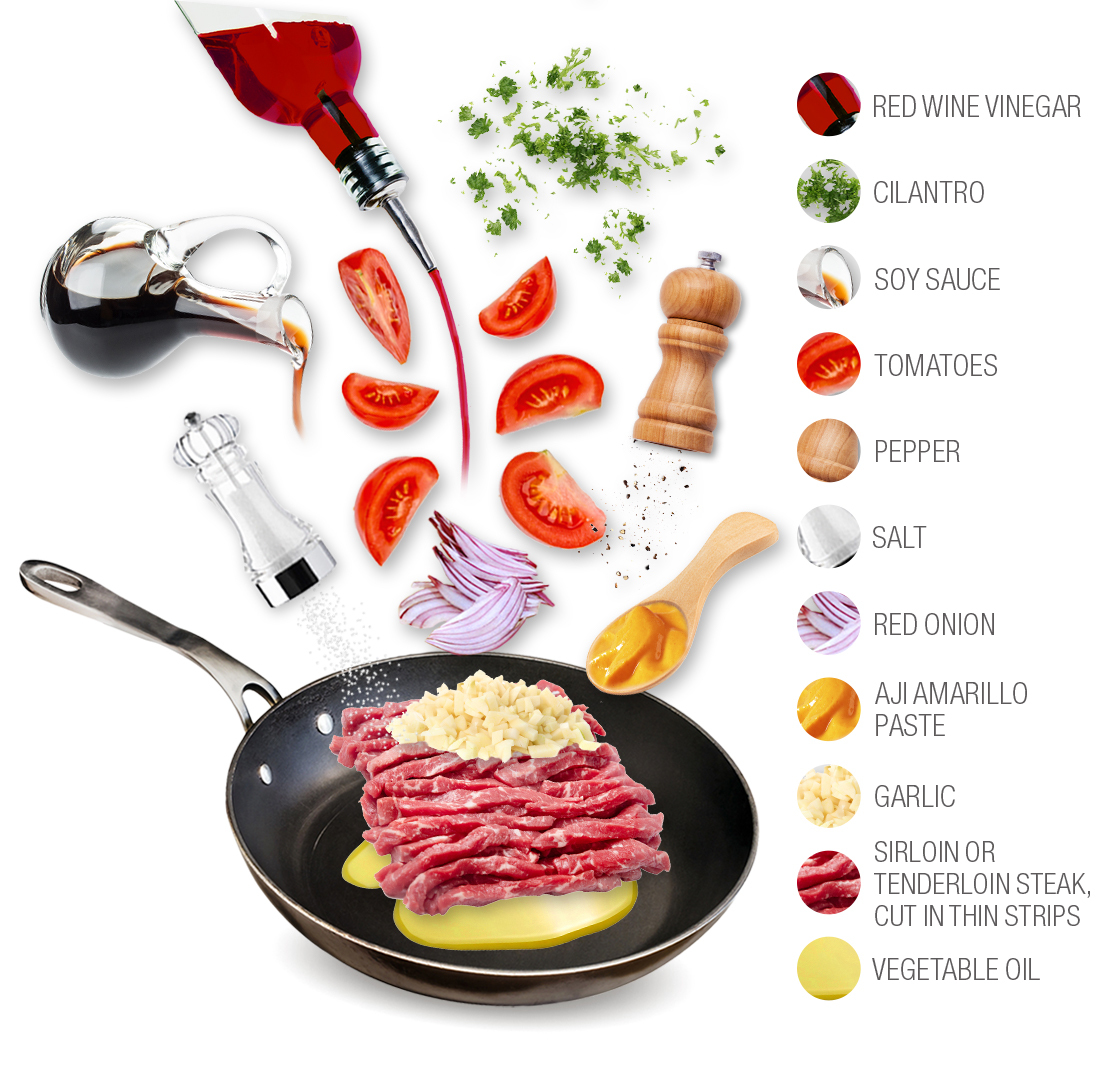MAIN INGREDIENTS
Lomo saltado is a traditional dish consisting of stir-fried marinated slices of sirloin or beef tenderloin, onions, yellow Peruvian chilis, and tomatoes. The dish is typically served with French fries and rice on the side, and can be found on the menus of almost all Peruvian restaurants, whether simple or upscale.
The dish has had a big Asian influence due to the influx of Chinese immigrants during the 19th century. Over the years, some Chinese cooking techniques were combined with the Peruvian, and new dishes were invented, such as lomo saltado. Today, there are many variations on the dish, so beef can be replaced by chicken, when it is called pollo saltado.
MOST ICONIC Lomo saltado
View moreMAIN INGREDIENTS
Lomo a la pobre or bistec a lo pobre is a large meal similar to Chorrillana that is popular in Chile and Peru. In its basic form, the meal consists of steak, fried onions, fried potatoes, fried eggs, and rice. A large beef steak (usually rubbed with garlic) is fried, then topped with fried eggs with runny yolks, while onions and potatoes are served on the side.
The name of this meal translates to poor man's steak, despite the fact that this dish is hearty and very nutritious. In Chile and Peru, it is almost always served for lunch.
Picante de carne is a traditional stew originating from Peru. Although there are many variations, it's usually made with a combination of beef (flank steak, beef shank, skirt steak, brisket, or neck), onions, garlic, cumin, hot peppers, oil, vegetable stock, fava beans, potatoes, parsley, salt, and pepper.
The meat is seasoned with salt and pepper and browned in oil. The onions and garlic are sautéed until soft and mixed with cumin, hot peppers, stock, and browned beef. The mixture is simmered until the meat is tender, and the fava beans and potatoes are then added to the pot and cooked until tender.
TasteAtlas food rankings are based on the ratings of the TasteAtlas audience, with a series of mechanisms that recognize real users and that ignore bot, nationalist or local patriotic ratings, and give additional value to the ratings of users that the system recognizes as knowledgeable. TasteAtlas Rankings should not be seen as the final global conclusion about food. Their purpose is to promote excellent local foods, instill pride in traditional dishes, and arouse curiosity about dishes you haven’t tried.













